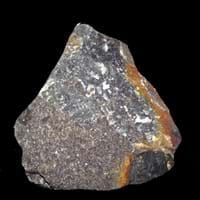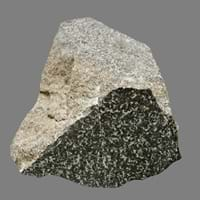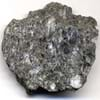Definition
Dolomite is a sedimentary rock containing more than 50 percent of the mineral dolomite by weight
Diabase is a fine-grained igneous rock which is composed mostly of pyroxene and feldspar
Origin
Southern Alps, France
Germany
Discoverer
Dolomieu
Christian Leopold von Buch
Etymology
From French, from the name of Dolomieu (1750–1801), the French geologist who discovered the rock
From Greek di + base
Class
Sedimentary Rocks
Igneous Rocks
Sub-Class
Durable Rock, Medium Hardness Rock
Durable Rock, Hard Rock
Group
Not Applicable
Volcanic
Other Categories
Coarse Grained Rock, Fine Grained Rock, Medium Grained Rock, Opaque Rock
Fine Grained Rock, Medium Grained Rock, Opaque Rock
Texture
Earthy
Aphanitic, Granular
Color
Black, Brown, Colourless, Green, Grey, Pink, White
Dark Grey to Black
Durability
Durable
Durable
Scratch Resistant
Yes
Yes
Appearance
Glassy or Pearly
Vesicular
Interior Uses
Decorative Aggregates, Homes, Interior Decoration
Countertops, Decorative Aggregates, Homes, Interior Decoration, Kitchens
Exterior Uses
Garden Decoration, Office Buildings
As Building Stone, As Facing Stone, Paving Stone, Garden Decoration, Office Buildings
Other Architectural Uses
Not Yet Used
Curbing
Construction Industry
As a Flux in the Production of Steel and Pig Iron, As a Sintering Agent in Steel Industry to process Iron Ore, As Dimension Stone, Cement Manufacture, for Road Aggregate, Making natural cement, Manufacture of Magnesium and Dolomite Refractories, Production of Glass and Ceramics, Serves as an Oil and Gas Reservoir rock
As Dimension Stone, Building houses or walls, Cement Manufacture, Construction Aggregate, for Road Aggregate
Medical Industry
Taken as a Supplement for Calcium or Magnesium
Not Yet Used
Antiquity Uses
Artifacts, Jewellery, Monuments, Sculpture, Small Figurines
Artifacts, Monuments, Sculpture, Small Figurines
Commercial Uses
An Oil and Gas Reservoir, As a Feed Additive for Livestock, Gemstone, Metallurgical Flux, Production of Lime, Soil Conditioner, Source of Magnesia (MgO)
An Oil and Gas Reservoir, Cemetery Markers, Commemorative Tablets, Laboratory bench tops, Jewelry, Sea Defence, Tombstones
Types
Boninite and Jasperoid
Not Available
Features
Host Rock for Lead, Traps for subsurface fluids like Oil and Natural Gas., Zinc and Copper Deposits
Smooth to touch
Archaeological Significance
Famous Monuments
Data Not Available
Stonehenge in English county of Wiltshire
Famous Sculptures
Data Not Available
Data Not Available
Pictographs
Used
Not Used
Petroglyphs
Used
Not Used
Formation
Dolomite rocks are originally deposited as calcite or aragonite rich limestone, but during diagenesis process, the calcite or aragonite is transformed into dolomite.
Diabase forms when molten igneous rock is squeezed up into a vertical crack in other rocks, the crack is usually forced apart and the molten rock cools in the space to form a tabular igneous intrusion cutting across the surrounding rocks and is known as a dike.
Mineral Content
Clay Minerals, Pyrite, Quartz, Sulfides
Augite, Chlorite, Olivine, Plagioclase, Pyroxene, Pyrrhotite, Serpentine
Compound Content
NaCl, CaO, Carbon Dioxide, Magnesium Carbonate, MgO
Aluminium Oxide, CaO, Chromium(III) Oxide, Iron(III) Oxide, Potassium Oxide, MgO, Sodium Oxide, Silicon Dioxide, Sulfur Trioxide
Types of Metamorphism
Burial Metamorphism, Cataclastic Metamorphism, Contact Metamorphism
Burial Metamorphism, Cataclastic Metamorphism, Contact Metamorphism, Regional Metamorphism
Types of Weathering
Not Applicable
Biological Weathering, Chemical Weathering
Types of Erosion
Not Applicable
Chemical Erosion, Coastal Erosion, Water Erosion
Grain Size
Medium to Fine Coarse Grained
Fine to Medium Grained
Fracture
Conchoidal
Conchoidal
Porosity
Less Porous
Highly Porous
Luster
Vitreous and Pearly
Not Available
Cleavage
Perfect
Not Available
Specific Gravity
2.8-3
2.86-2.87
Transparency
Transparent to Translucent
Opaque
Density
2.8-2.9 g/cm3
2.7-3.3 g/cm3
Specific Heat Capacity
Not Available
Resistance
Heat Resistant, Pressure Resistant, Wear Resistant
Heat Resistant, Impact Resistant, Pressure Resistant, Wear Resistant
Deposits in Eastern Continents
Africa
Morocco, Namibia
South Africa, Tanzania
Europe
Austria, Italy, Romania, Spain, Switzerland
Germany, Greece, Italy, Scotland, Turkey
Others
Not Yet Found
Antarctica, Greenland
Deposits in Western Continents
North America
Mexico, USA
Canada, USA
South America
Brazil, Colombia
Argentina, Brazil, Colombia, Venezuela
Deposits in Oceania Continent
Australia
New South Wales, Queensland, Yorke Peninsula
Central Australia, New Zealand, Queensland, Western Australia
All about Dolomite and Diabase Properties
Know all about Dolomite and Diabase properties here. All properties of rocks are important as they define the type of rock and its application. Dolomite belongs to Sedimentary Rocks while Diabase belongs to Igneous Rocks.Texture of Dolomite is Earthy whereas that of Diabase is Aphanitic, Granular. Dolomite appears Glassy or Pearly and Diabase appears Vesicular. The luster of Dolomite is vitreous and pearly while that of Diabase is not available. Dolomite is available in black, brown, colourless, green, grey, pink, white colors whereas Diabase is available in dark grey to black colors. The commercial uses of Dolomite are an oil and gas reservoir, as a feed additive for livestock, gemstone, metallurgical flux, production of lime, soil conditioner, source of magnesia (mgo) and that of Diabase are an oil and gas reservoir, cemetery markers, commemorative tablets, laboratory bench tops, jewelry, sea defence, tombstones.










